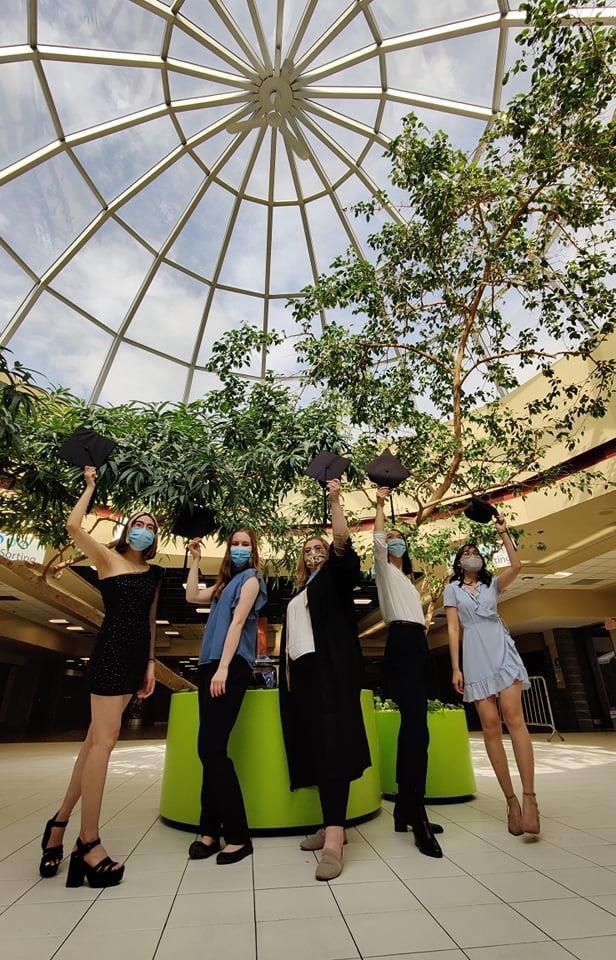
After celebrating convocation in their living rooms, Lisa Pham and fellow students returned to campus for a nostalgic tour.
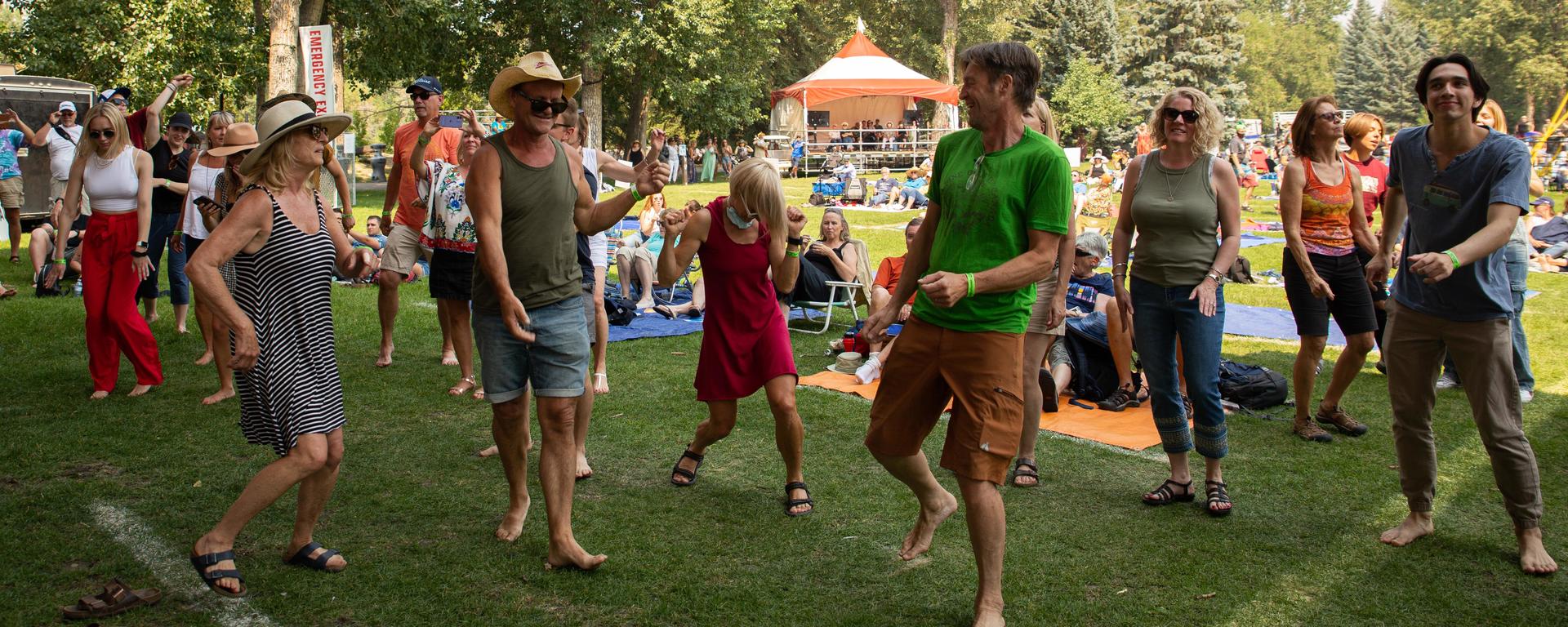
It was the weirdest thing. A Pied Piper for adults moment.
There I was in late July, ambling along a street in Canmore when I heard music — live music. Following it, like hordes of others who tumbled off their decks and onto the streets, we wound up at the Malcolm Hotel where Jim Cuddy, of Blue Rodeo fame, was wailing away, poolside.
Hundreds of people plunked down on the grass . . . some swaying, others singing, a few were visibly weepy — in rapture of the moment. If we hadn’t been hauling ourselves out of the third wave and enjoying a bit of collective freedom after 18 months of on-again/off-again lockdowns, it would have been — meh, any ol’ night.
Instead, it was a moment of what’s been dubbed “collective effervescence.” Coined in the early 20th century by the sociologist Émile Durkheim, collective effervescence describes the sense of energy and harmony people feel when they come together in a group where they simultaneously communicate the same thought and participate in the same action. You know, like rockin’ out on a dance floor with a bunch of strangers.
It’s precisely these moments of group bliss that the pandemic has robbed us of — whether we typically find it on a dance floor, doing the wave at a hockey game, brainstorming at work or singing in a choir. While we are certainly not endorsing large group activities we are curious — do we really need a group to feel happy? Are emotions that contagious?
“Absolutely,” says Dr. Ted Jablonski, MD, associate director of student advising and wellness at the Cumming School of Medicine. “No matter how independent and autonomous we think we are — in the end, we are social beings who are highly impacted by those around us. Emotions are the subconscious language we speak (whether we are aware of it or not), and it’s hard not to react to this consciously or subconsciously.”

After celebrating convocation in their living rooms, Lisa Pham and fellow students returned to campus for a nostalgic tour.
Last spring, Lisa Pham, BA’21, BEdP’21, like thousands of other grads, celebrated convocation in her parents’ living room — but she insisted on returning to campus in June with three close friends. Snapping on masks, they shot photos of themselves in iconic spots — in front of certain lecture halls, their favourite breakfast spot in Mac Hall, where they had studied in the library. “It was a small moment of collective effervescence, but it was something shared, and that was critical for me,” she says.
Admitting to being an extrovert, Pham held back on joining any big-group activities this past summer, but continues to long for “a concert . . . I know this is weird, but now, now I will be happy to wait in line for hours. I so want to stand in the front row with other random strangers as we all share our love for music and scream lyrics at the top of our lungs. I can't wait to go back to the clubs (I just really love dancing) and be able to let loose — really loose.”
Stephanie Mok, BSW’19, gets to witness collective effervescence for her job. As director of development for the Calgary Folk Festival, Mok watches dozens of concerts, involving thousands of people, every year. She believes moments of group bliss lie deep in our DNA. “We are wired from birth to feel what others are feeling,” she says. “Emotions are definitely a social experience.”
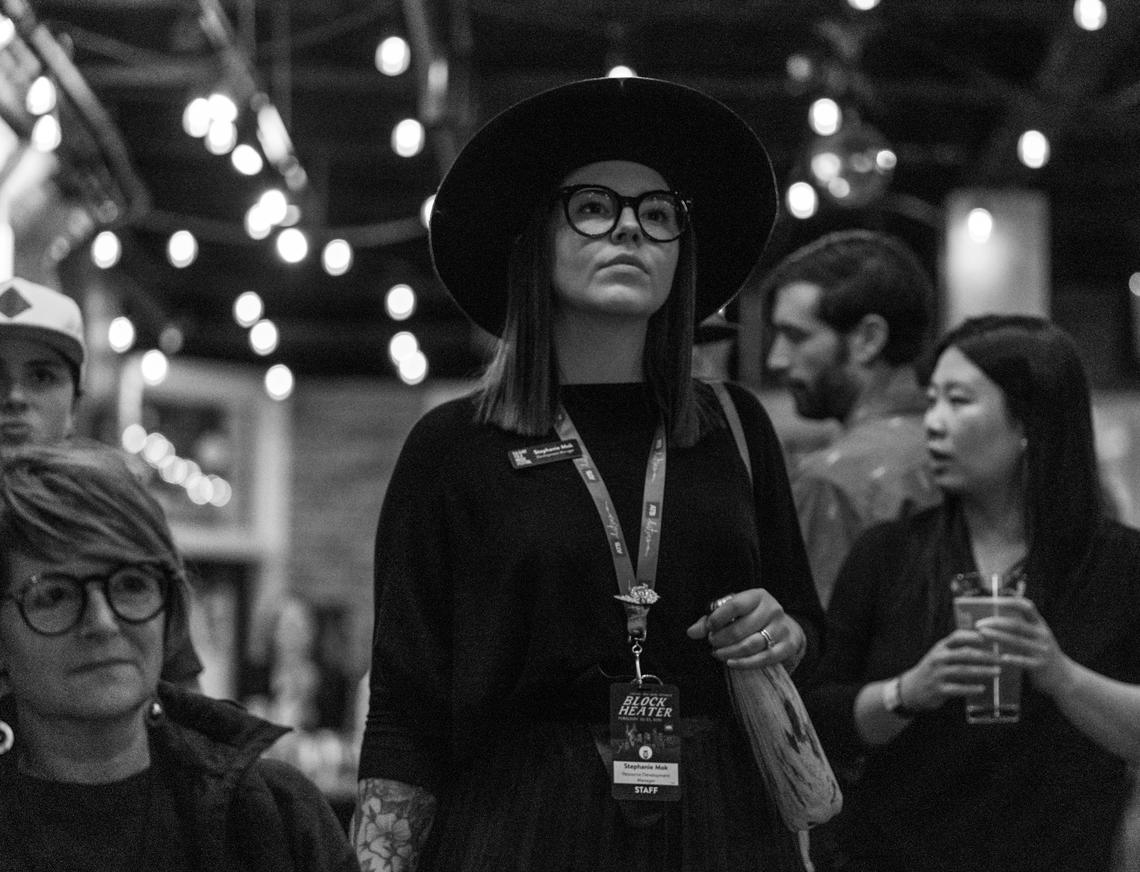
Part of Stephanie Mok’s job with the Calgary Folk Festival is to witness collective effervescence at the dozens of concerts she attends.
Lisa Amos
What Mok witnessed in early August at Summer Serenades (the Calgary Folk Fest’s modified concert series at Prince’s Island Park) was unforgettable. “Canadian singer-songwriter Dan Mangan stepped out into the audience and had the entire field join him in a call and response,” recalls Mok. “This collective experience was incredibly moving — there were so many tears of joy as the entire island created harmony with him.
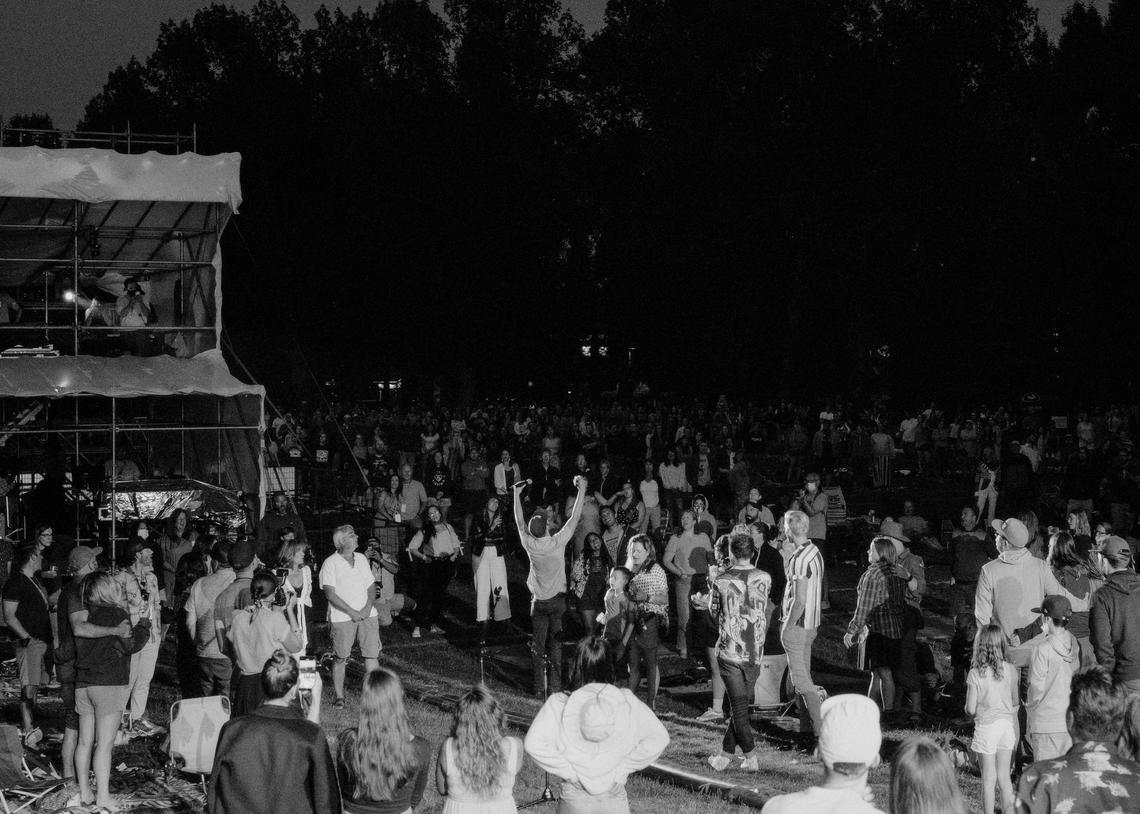
In August, when Canadian singer-songwriter Dan Mangan got the crowd singing at Prince’s Island Park “there were so many tears of joy,” says Stephanie Mok, director of development for the Calgary Folk Festival.
Allison Seto
“This was the moment where all of us at the festival really felt that we were ‘back’ to what we do best — (creating) these opportunities for artists to spark connection between their music and the audience. It was profoundly moving and a moment I will never forget.”
If the pandemic robbed us of these moments, what has replaced collective joy?
“Fear and loneliness,” says Jablonski, who, as a front-line clinician, has seen patients and students express these emotions in massive numbers as well as “impatience and frustration.”
But moments of collective effervescence lie not only with the audience. Performers — from comedians and dancers to actors and singers — have felt that loss of connection acutely. As a member of the acapella group, the Heebee-jeebees, Jonathan Love, BA’97, MFA’03, has performed a weekly gig with the same three guys for 28 years. Although they tried to replace their “live” concerts with online community events and an app that allowed them to create and record individually, “it just wasn’t the same as singing together,” Love says. “Ultimately, we felt like . . . stuntmen.
“There’s nothing quite like a full auditorium of people — some friends, mostly strangers — singing all the lyrics to a song you wrote and recorded when you were a U of C student (where the Heebee-jeebees first formed). When a performer or group and their audience are in sync, there’s nothing better. I see and feel this as the vibrations of energy in the room perfectly align in harmony with each other. This is the type of energy and frequency that elevates all in attendance — performers, technicians, audience members, alike. Sometimes it’s just a moment in a show; sometimes it’s the whole event. In either case, it’s the reason to be there.”
Was there any truth to those quips we heard early in the pandemic that introverts had “been preparing for this moment their entire lives?” Recent evidence, in fact, reveals just the opposite. Throughout the pandemic, it was introverts who expressed more feelings of depression, anxiety, stress and loneliness. Many admitted to being surprised, but they, too, found themselves craving social interaction and moments of collective effervescence, just like their extroverted counterparts.
Jablonski, who identifies “as an introvert who coped very well during the pandemic” — likely because his daily routine didn’t change that drastically as he continued to work and see patients (albeit via Zoom). He suggests, however, that, perhaps, “introverts coped well in the beginning as it wasn’t that much of a change and they were used to managing on their own. The difference may be that, when they got tired of all their introverted activity and wanted to break out — they had no tools to do so and found themselves unable. Meanwhile, the extroverts had figured it out and moved on (one way or another) . . .”
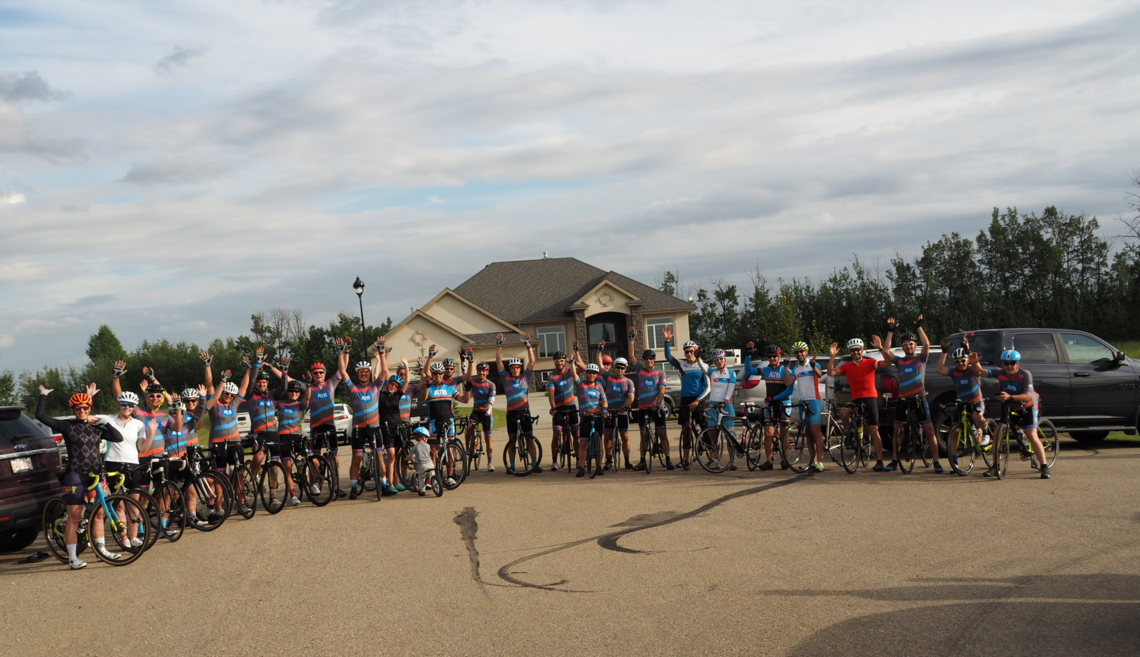
Before the pandemic, student Marcus Smith participated in many intramural sports and large group activities like this road race.
Fifth-year business and kinesiology student Marcus Smith agrees with Jablonski’s theory. “When COVID first hit, there was sort of a weird excitement in the fast transition from school to home. But it got old, fast,” he says. “I found myself yearning to see my friends on a regular basis and to participate in extra activities that were being cancelled. I even missed those late nights spent studying . . . because they had been with my friends.”
Just like Smith, UCalgary’s community ambassador in Residence Services, commerce and economics student Sonja Mellema, enjoyed the extra time that lockdown gave her. At first. But, after a while, she noticed a shift in confidence. “I began to question myself,” she says. “Eventually this disappeared, but, as a highly social and extroverted individual, I suppose it’s people who give me confidence in social situations. Additionally, it felt as if my social battery took longer to charge.”
With workplaces and campuses reopening this fall, more of us, some day, will get to experience moments of collective effervescence.
In fact, people like MyAn Pacholkow, BComm’10, have done a bit of that already. A devoted member of the Calgary Community Choir, Pacholkow recently attended four outdoor concerts in one week.
“It was like being back in choir,” says the UCalgary employee, wistfully. “We sang, we knocked on our chairs, we wiggled in our seats . . . there was such a sense of belonging, of sharing something bigger than ourselves. I felt so . . . so euphoric.”
Adds Jablonski: “To feel a part of something much greater and more powerful than any individual or than all the individuals who may be there — that’s a moment of collective effervescence. These are the times that I cherish and will never forget.”
These are the precise moments where happiness lives – may our future, some day, be full of group joy. Until then get vaccinated and follow the public-health protocols.